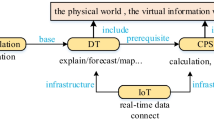Abstract
The Korean Railroad Research Institute (KRRI) developed the rubber-tired AGT system (Model: K-AGT) between 1999 and 2005. The K-AGT is a light rail transit system does not require a driver and generally operates on an elevated railroad for transporting passengers. Accidents caused by driverless vehicles can severely affect social confidence, safety and economy. Therefore, it is very important to minimize the occurrences of such faults, and to accurately perform detailed maintenance tasks and thoroughly investigate the cause of any repeated failures. This research develops the web-based reliability centered maintenance (RCM) system for the K-AGT train system. The framework of the RCM system is based on performing a failure mode and effects analyses (FMEA) procedure on all the sub-systems in the K-AGT system. Out of the devices that have a low reliability, the high failure ranked devices are included high on the list for performing the overall maintenance plans. Through registration of historical failure data and the reliability indexes, the results of the FMEA can be updated. Such a process is repeated continuously and can achieve very accurate predictions for device operational lifetimes and failure rates. Also, the RCM system is designed so that workers can refer to the expert system for the latest procedures to perform the required diagnosis and repair of any failure. The overall RCM system consists of a failure/task management system, a preventive maintenance system, an expert system, a material management system, and an approval system. This research describes the development of the preventive maintenance system and the expert system that have been produced because these are the main functions for the RCM system.
Similar content being viewed by others
References
The Ministry of Construction and Transportation, Light rail system engineering development business 7th year research report, Total Systems Engineering, (2005).
F. P. Garcia Marquez, F. Schmid and J. C. Collado, A reliability centered approach to remote condition monitoring, Reliability Engineering and System Safety, 80(1) (2003) 33–40.
Relex Software Co., A Guide Book for Reliability Prediction, Kyo Woo Sa Press, Seoul, (2002) 4–7.
J. Y. Song, H. S. Lee, J. S. Jang, J. Y. Jung and S. D. Ha, Failure Mode and Effect Criticality Analysis, Kyowoo Publishing, Seoul, (2005).
W. Wendai, J. M. Loman, R. G. Armo, P. Vassiliou, E. R. Furlong and D. Ogden, Reliability block diagram simulation techniques applied to the IEEE Std. 493 standard network, IEEE Transactions on Industry Applications, 40(3) (2004) 887–895.
J. S. Lee and Y. G. Kim, A Hybrid Malfunction Diagnosis System using Customer-Reported Symptoms, Korea Expert System Society, 4(1) (1998) 115–131.
C. S. Ha and K. S. Rhyu, Design and Implementation of Intelligent Web Search Agent Using Case Based Reasoning, Korea Society of Computer and Information, 8(1) (2003) 20–29.
W. U. Han, J. C. Sohn, H. S. Ham and J. H. Kang, A Study on a System to develop Rule-based applications, Korea Information Science Society, 30(2) (2003) 259–262.
J2EE(tm) Developer’s guide, Sun Microsystems, Inc., (2000).
JSSE for the Java 2 SDK, Standard edition, v1.4, Sun Korea, Inc., (2003).
Oracle 9i user’s guide, Oracle, (2002).
Author information
Authors and Affiliations
Corresponding author
Additional information
This paper was recommended for publication in revised form by Associate Editor Dae-Eun Kim
Myung-Won Suh is a Professor of Mechanical Engineering. During 1986–1988, he worked for Ford motor company as researcher. From 1989–1995, he worked in technical center of KIA motors. He took a BS degree in Mechanical Engineering from Seoul National University and an MS degree in Mechanical Engineering from KAIST, South Korea. He obtained his Doctorate at the University of Michigan, USA, in 1989. His research areas include structure and system optimization, advanced safety vehicle and reliability analysis & optimization.
Chul-Ho Bae is a PhD candidate at Sungkyunkwan University in Suwon, South Korea. He accomplished fellowship work as researcher at Mississippi State University, USA, in 2003 and 2005. He worked in Institute of Advanced Machi-nery and Technology (IMAT) as a Research Assistant in 2004. He was a part time Lecturer in computer aided Mechanical Engineering of Ansan College of Technology, Suwon Science College, and Osan College during 2004–2005. He took a BS Degree in Mechanical Design and an MS Degree in Mechanical Engineering from the Sungkyunkwan University. His research interests include computer aided engineering, reliability engineering, and optimization.
Rights and permissions
About this article
Cite this article
Bae, C., Kim, H., Son, Y. et al. Development of a Web-based RCM system for the driverless Rubber-Tired K-AGT system. J Mech Sci Technol 23, 1142–1156 (2009). https://doi.org/10.1007/s12206-009-0304-9
Received:
Revised:
Accepted:
Published:
Issue Date:
DOI: https://doi.org/10.1007/s12206-009-0304-9




